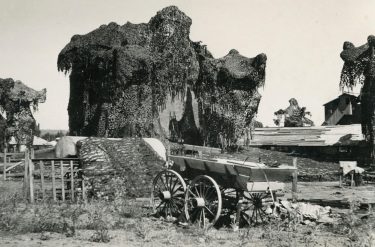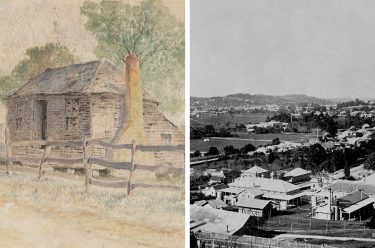Three Queensland Anzacs — Hogarth brothers Alexander Forbes (1886–1915), Archibald McDonald (1879–1916) and Joseph (1877–1918) — are remembered in stained glass windows designed by local artist William Bustard (1894-1973) in St Andrews Anglican Church (illustrated) at Pittsworth, a town in the Darling Downs region, 41 kilometres from Toowoomba and 169 kilometres south-west of Brisbane, and home to some of the richest farming land in Queensland.
William Bustard ‘(Darling Downs landscape)’ 1930s
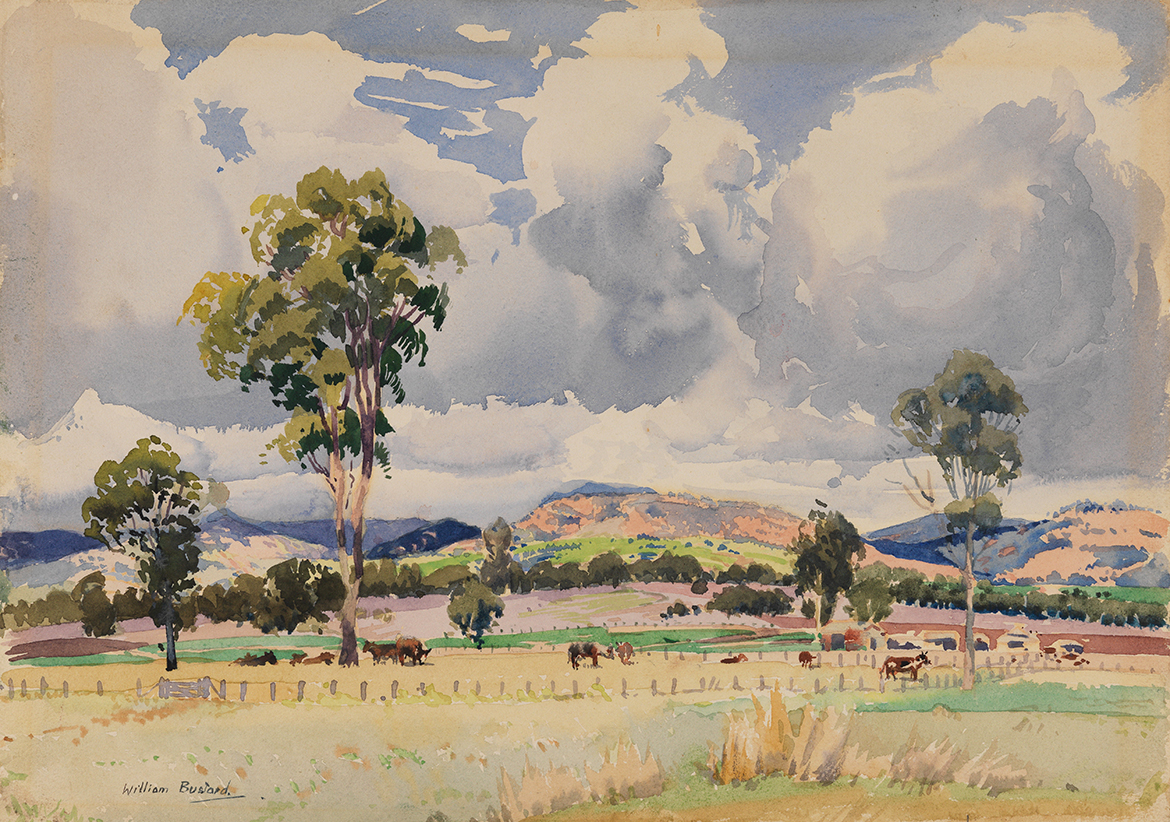
Ann (Annie) Cunninghame Hogarth (nee Robertson) and William Hogarth were both from Cumberland in north-west England before emigrating to Australia in their early-thirties, they married in Sydney in 1873. William was a cousin of Patrick Leslie who in 1839 first establish a European presence on the Darling Downs at Canning Downs.
Ann’s family were a wealthy and prominent family of graziers in New England, New South Wales. Their father William’s family from Scotland were known throughout the world as meat curers When William moved to Queensland he worked on the Glengallan run before selecting a large block of choice land on the Darling Downs. He named the property Balgownie, in honour of the ‘Auld Brig o’ Balgownie’ in Aberdeen and made a name for his merino flock and his Aberdeen-Angus polled herd of cattle.1
By 1886 the property was featured in a profile of the region in The Brisbane Courier, ‘Balgownie Estate is the property of William Hogarth… situated some fifteen miles west of the Clifton railway station… the homestead is charmingly placed as regards landscape effects, for from the veranda of the house a view of the whole property is obtained. The comfortable dwelling-house is erected upon a stony rise, looking down over the level plains of fertile black soil which stretch to a line of timber fully five miles away, and which timber marks the meanderings of the Condamine River. The estate is… about 8000 acres of freehold. Mr. Hogarth is one of the few sheep breeders of Queensland who have remained faithful to “clothing” wool… The sheep are of the true Negretti type, and the wool is beautifully fine, soft, dense, and even.’2
Balgownie Homestead
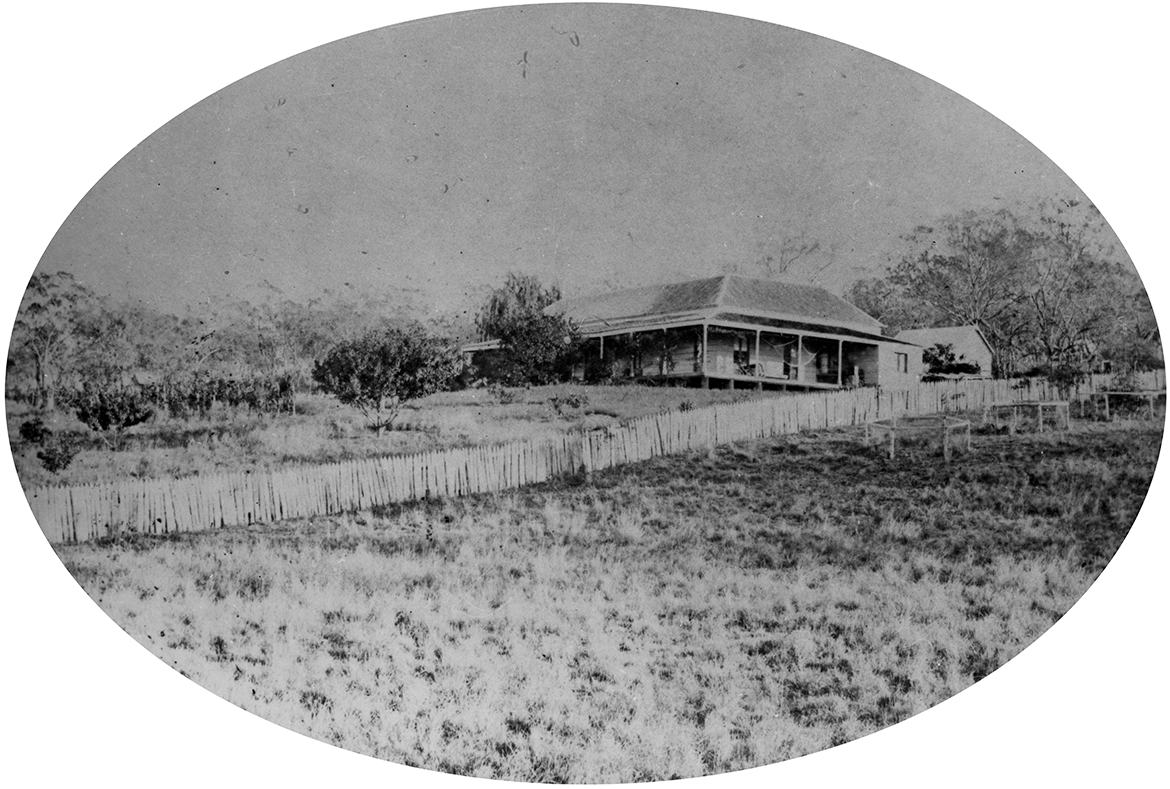

Their mother managed their property ‘Balgownie’ (illustrated) with her family of 11 after her husband tragically drowned in treacherous waters after heavy rain in January 1894.3 She again took command in 1914 when her four sons, including younger brother Angus David Hogarth (b.1888), enlisted in World War One (28 July 1914 – 11 November 1918). Sadly, only Angus returned from the war.
Hogarth brothers

World War One patriotic procession, Pittsworth 1914
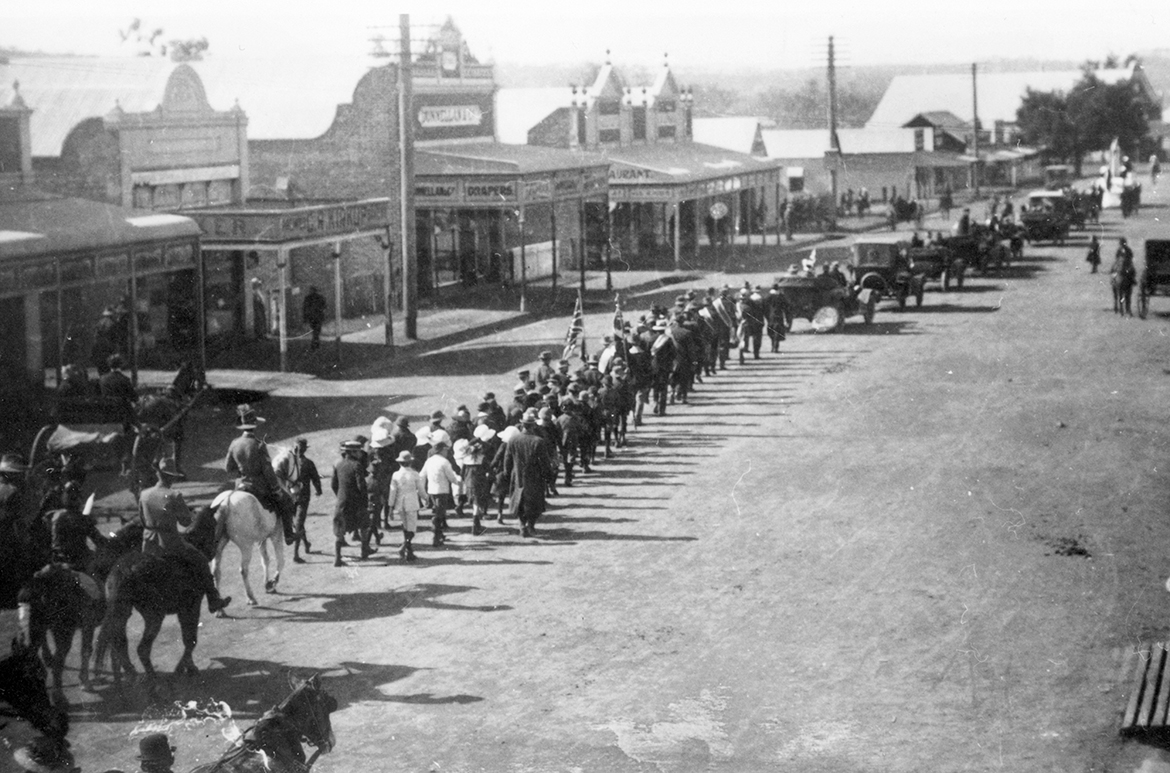
On 25 April in 1939 when Bustard’s three stained glass windows were unveiled, just four months before the start of World War Two (1 Sept 1939 – 2 Sept 1945), the Pittsworth Sentinel noted ‘… the gloomy forebodings of war, caused by the almost daily alarming news from abroad, and the huge expenditure of money on armaments and the building of fortifications in Europe, and with a correspondingly large expenditure in the Commonwealth, has contributed to some extent — and a very large extent — to the observation of Anzac Day this year with greater fervor and intensity of feeling than has been the case previously… We can only hope that the fear of the people will soon be allayed, and that alarming war news will cease to be. It has been proved that the last war did not end wars…’
‘The unveiling of the War Memorial Stained Glass in St. Andrew’s Church… were in memory of all the fallen soldiers in the district, irrespective of what church they were members of, and all who served in any capacity in the nation’s need, and was an act of great generosity and thoughtfulness on the part of the late Mrs. Ann Cuninghame Hogarth, who made the bequest.’4
Consecration of St Andrews Anglican Church
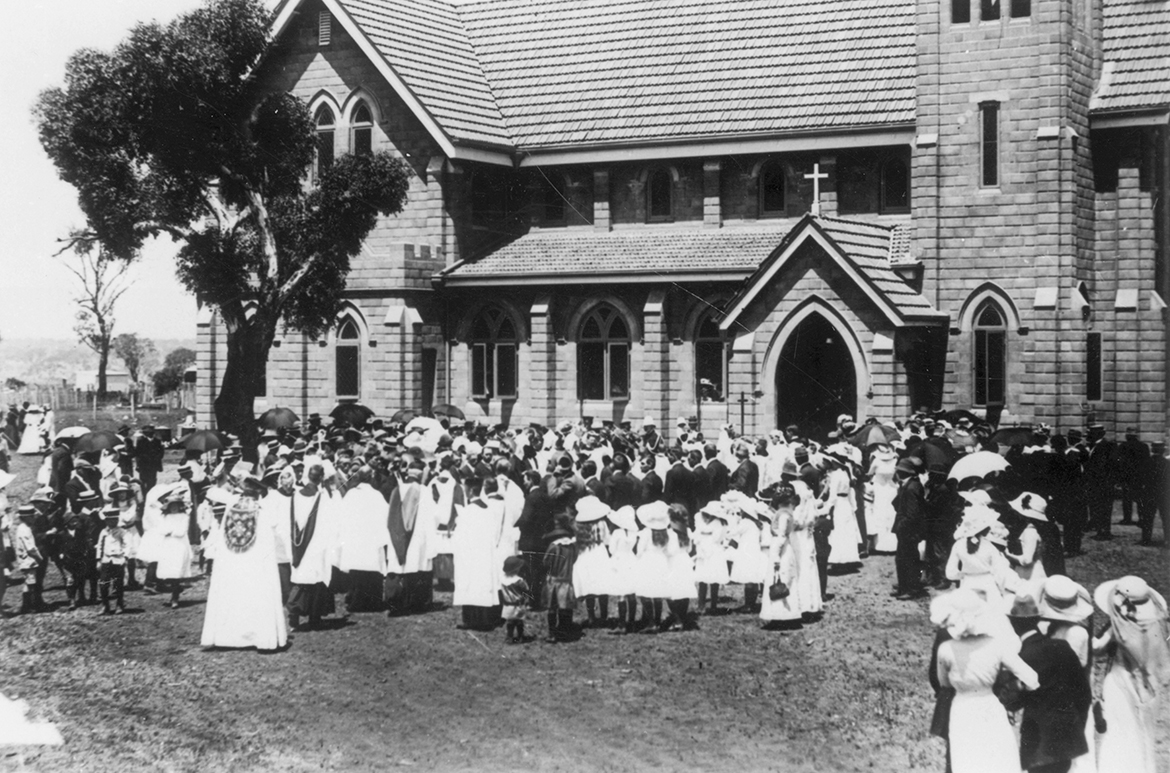
St Andrews Anglican Church
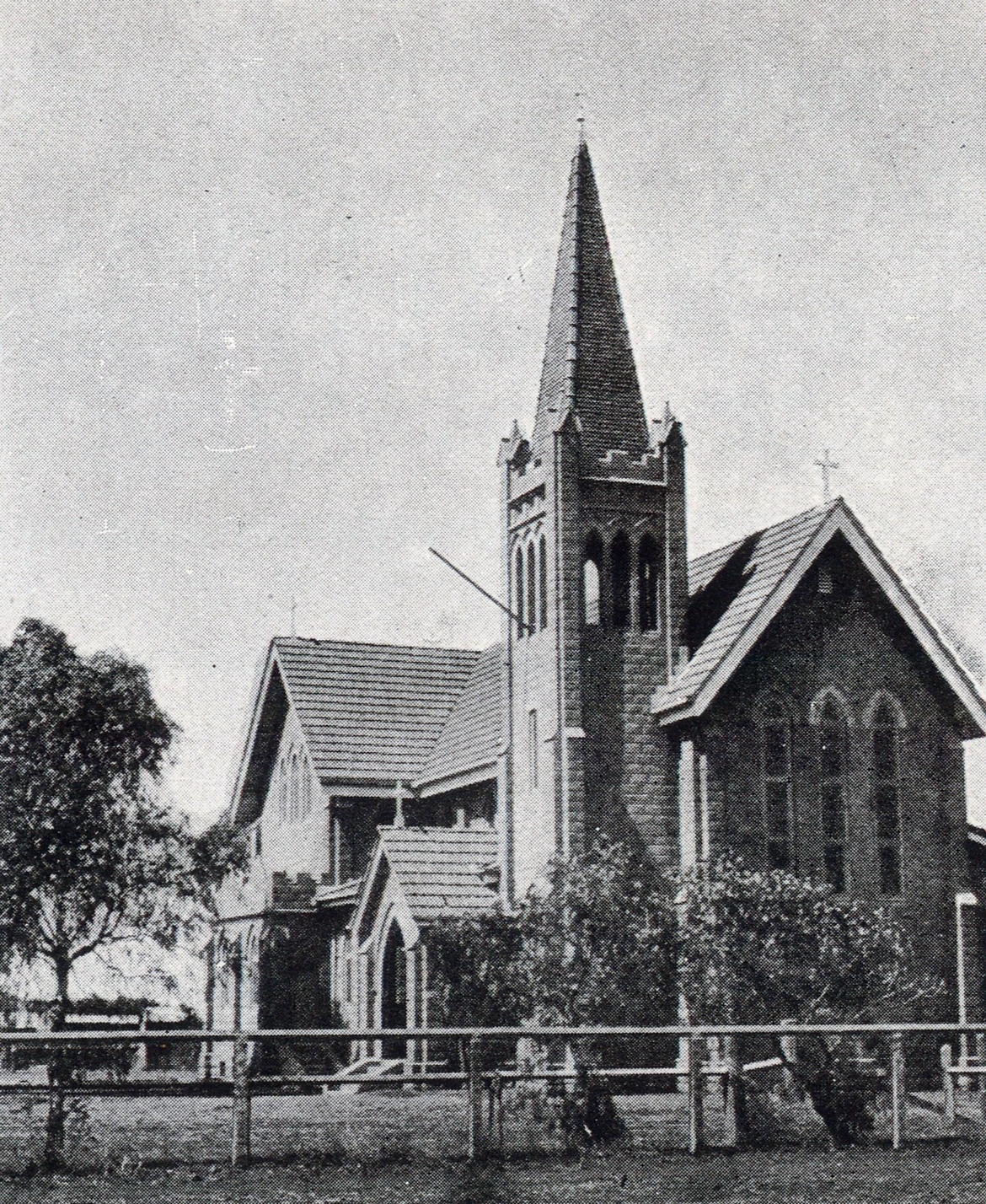
The stained glass windows designed by Bustard were manufactured by RS Exton & Co, renowned painters, decorators and glaziers in Brisbane who also worked with the artist on stained glass for St Stephen’s Catholic Cathedral, Brisbane and the Brisbane City Hall. Originally the windows were to be produced in England, similar to the earlier four windows in the church dedicated previously to the memory William Hogarth and his three sons, however the high exchange rate and transit cost meant the order was cancelled and recommissioned locally.
Detail of stained glass previously dedicated to the Hogarth family
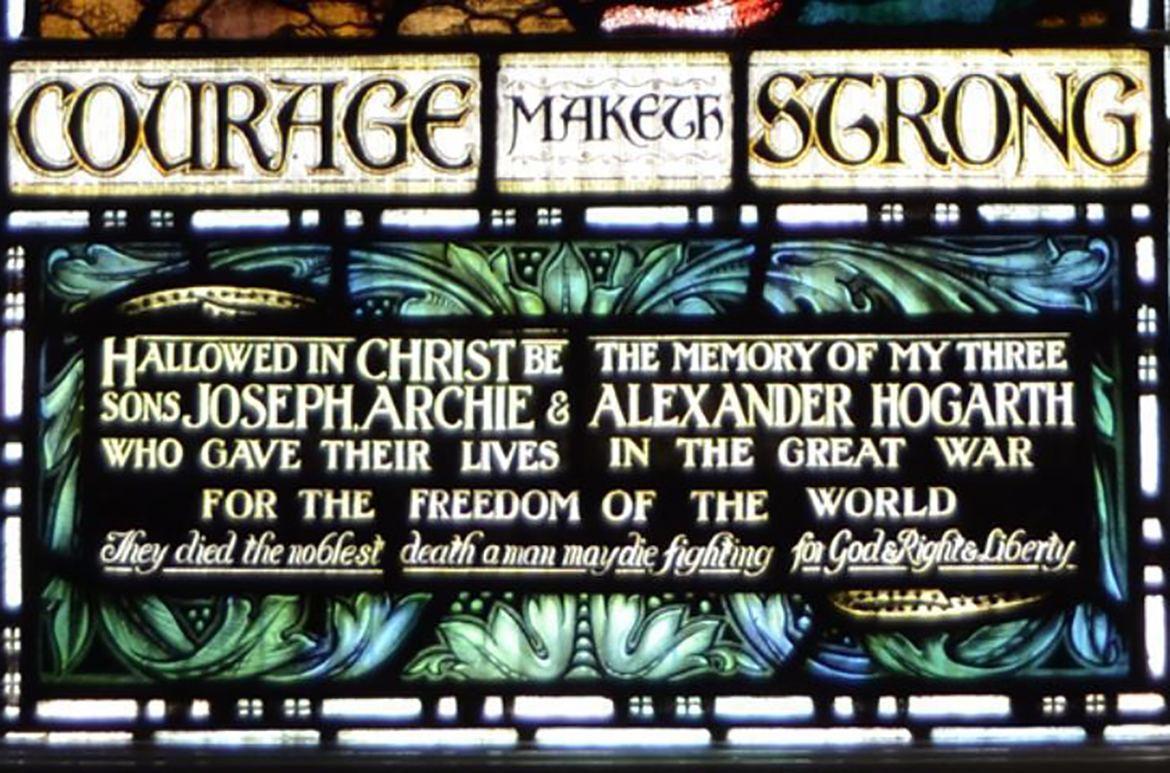
The following inscription at the bottom of the stained glass designed by Bustard and unveiled by Angus Hogarth is — To the glory of God. These windows were given by Ann Cuninghame Hogarth who loved all things beautiful. They were designed to commemorate the Spirit of Sacrifice expressed in the lives of the brave men and women of the Pittsworth district who served in the Great War of 1914 – 1918 for the cause of righteousness and in defence of the British Empire. Lord God of Hosts, be with us yet, lest we forget, lest we forget.
Ann Cunninghame Hogarth
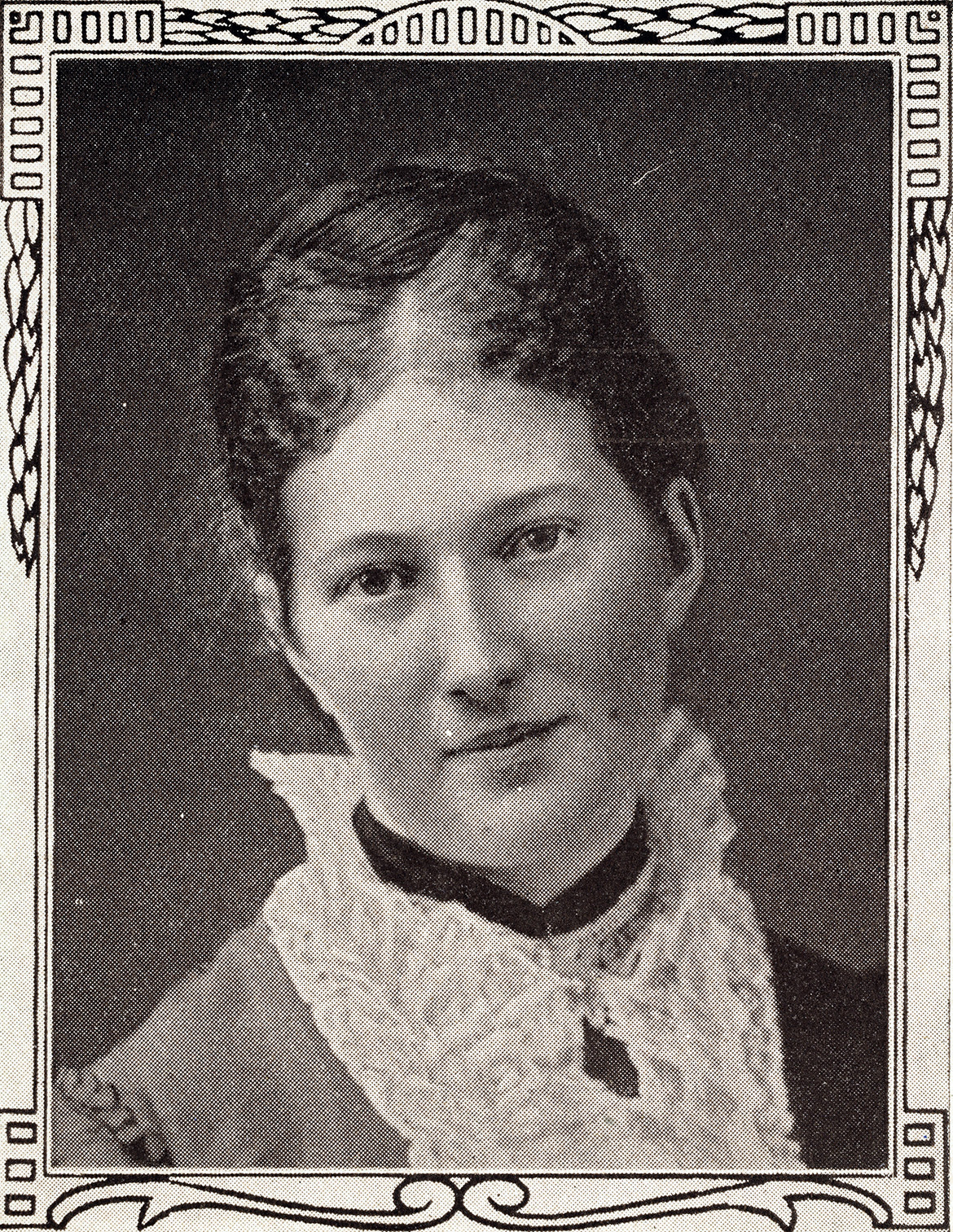
Detail of stained glass designed by William Bustard


William Bustard
Born in England, William Bustard (1894-1973) was a painter, stained glass artist and book-illustrator. He learnt stained glass techniques in London and worked in cathedrals locally and in the United States before enlisting and serving in World War One. After the war he remained in Europe and helped repair medieval stained glass in Belgium and France.
Bustard migrated to Queensland in 1921 with his wife Lily and soon became a leading figure in the development of art in Queensland and a strong advocate for Queensland artists. He taught at Brisbane’s Central Technical College, was president and life member of the Royal Queensland Art Society and a member of the Queensland National Art Gallery Board of Trustees and Arts Advisory Committee.
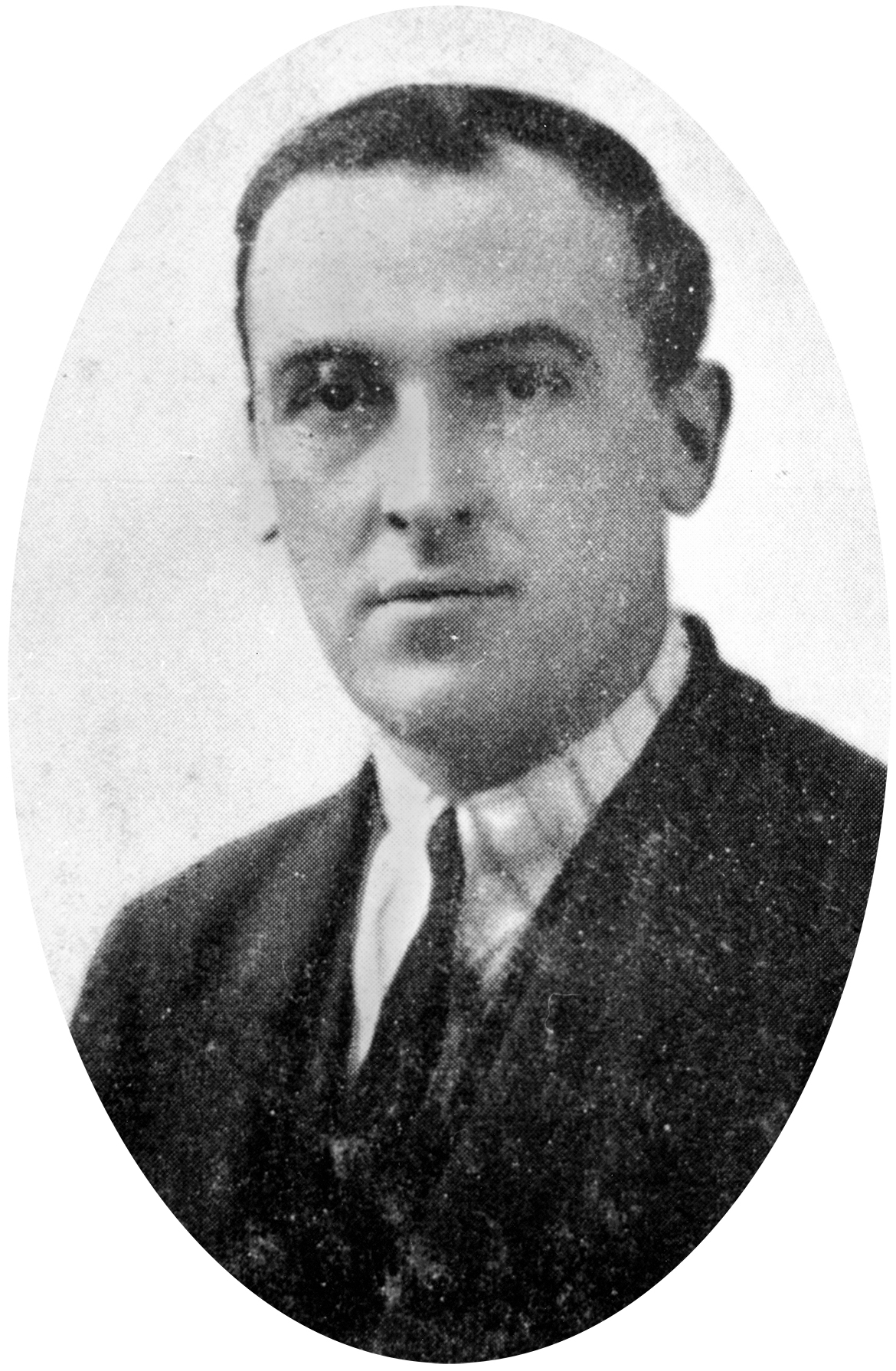
Stained glass windows designed by Bustard can also be seen in St John’s Anglican Cathedral, Brisbane (illustrated); St Stephen’s Catholic Cathedral, Brisbane; St Augustine’s Anglican Church, Hamilton; and Brisbane City Hall (illustrated), among others. QAGOMA has a collection of working illustrations by Bustard, among them window designs for All Saints’ Anglican Church, Brisbane (illustrated); and St Mary’s Star of the Sea Cathedral in Darwin (illustrated). This Catholic Cathedral was built in 1962 as a War Memorial to those who died in the Japanese air raid in 1942 during World War Two.
Edited extracts, additional research and supplementary material sourced by the QAGOMA Research Library and Elliott Murray, Senior Digital Marketing Officer, QAGOMA
Endnotes
1 ‘Death of Mr. W Hogarth’, The Queenslander, 3 February 1894, p.225
2 ‘The Darling Downs – Their Modern Development’, The Brisbane Courier, 23 November 1886, p.2
3 ‘Death of Mr. W Hogarth’, The Queenslander, 3 February 1894, p.225
4 ‘Anzac Day. Unveiling of War Memorial Windows’, Pittsworth Sentinel, 26 April 1939, p.3
Design of stained glass for St John’s Anglican Cathedral
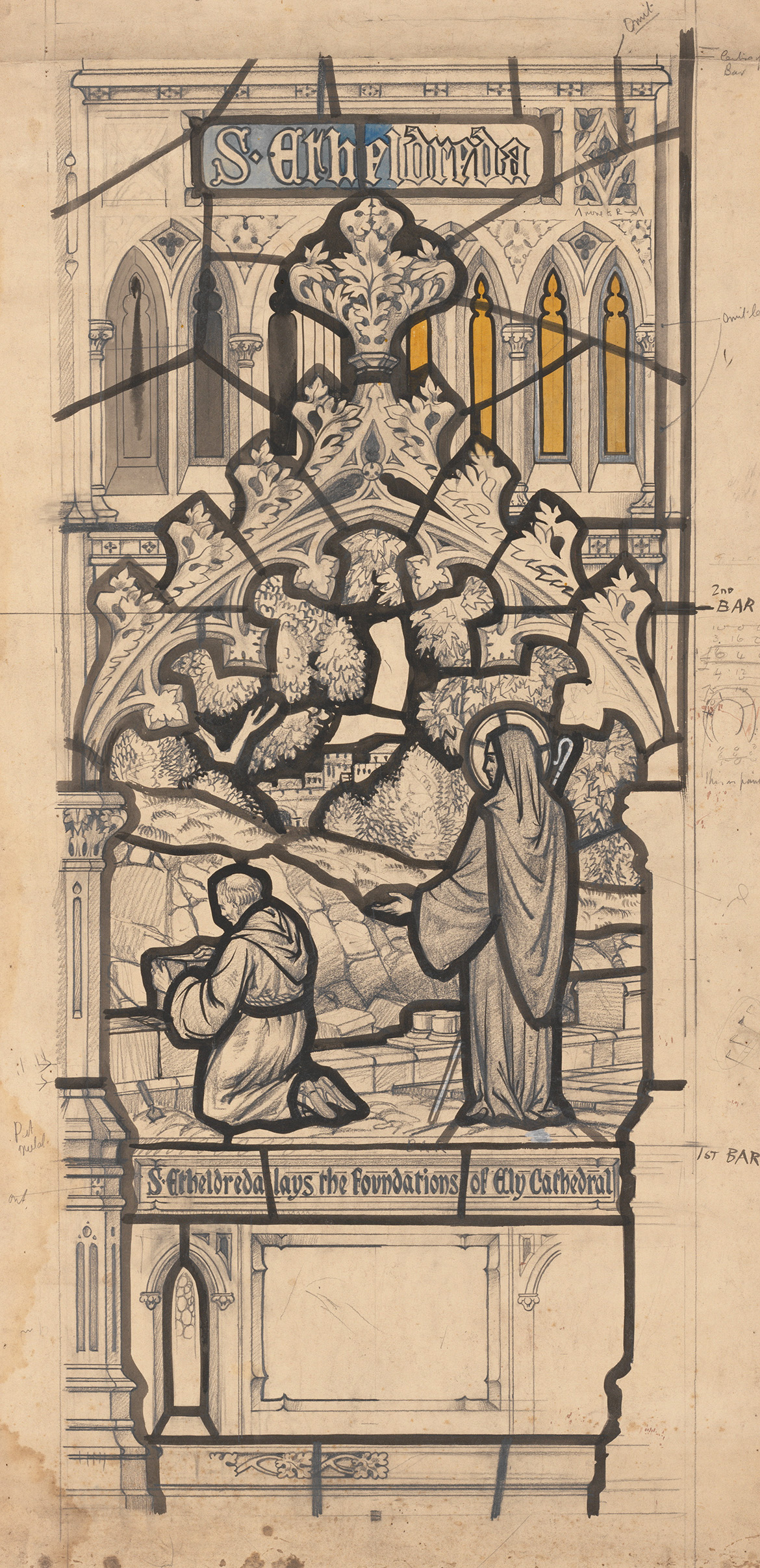
Detail of stained glass from Brisbane City Hall

Design of stained glass for All Saints’ Anglican Church
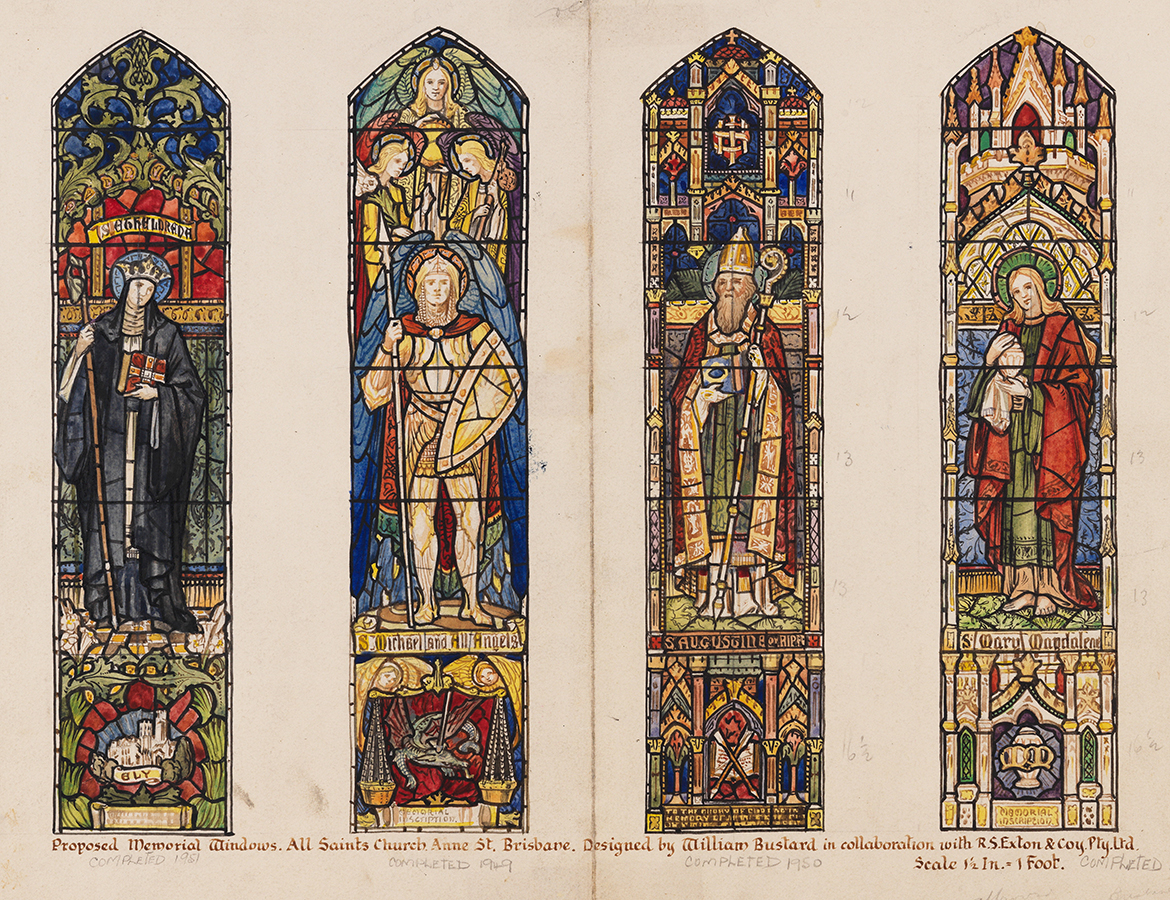
Design of stained glass for St Mary’s Star of the Sea Cathedral
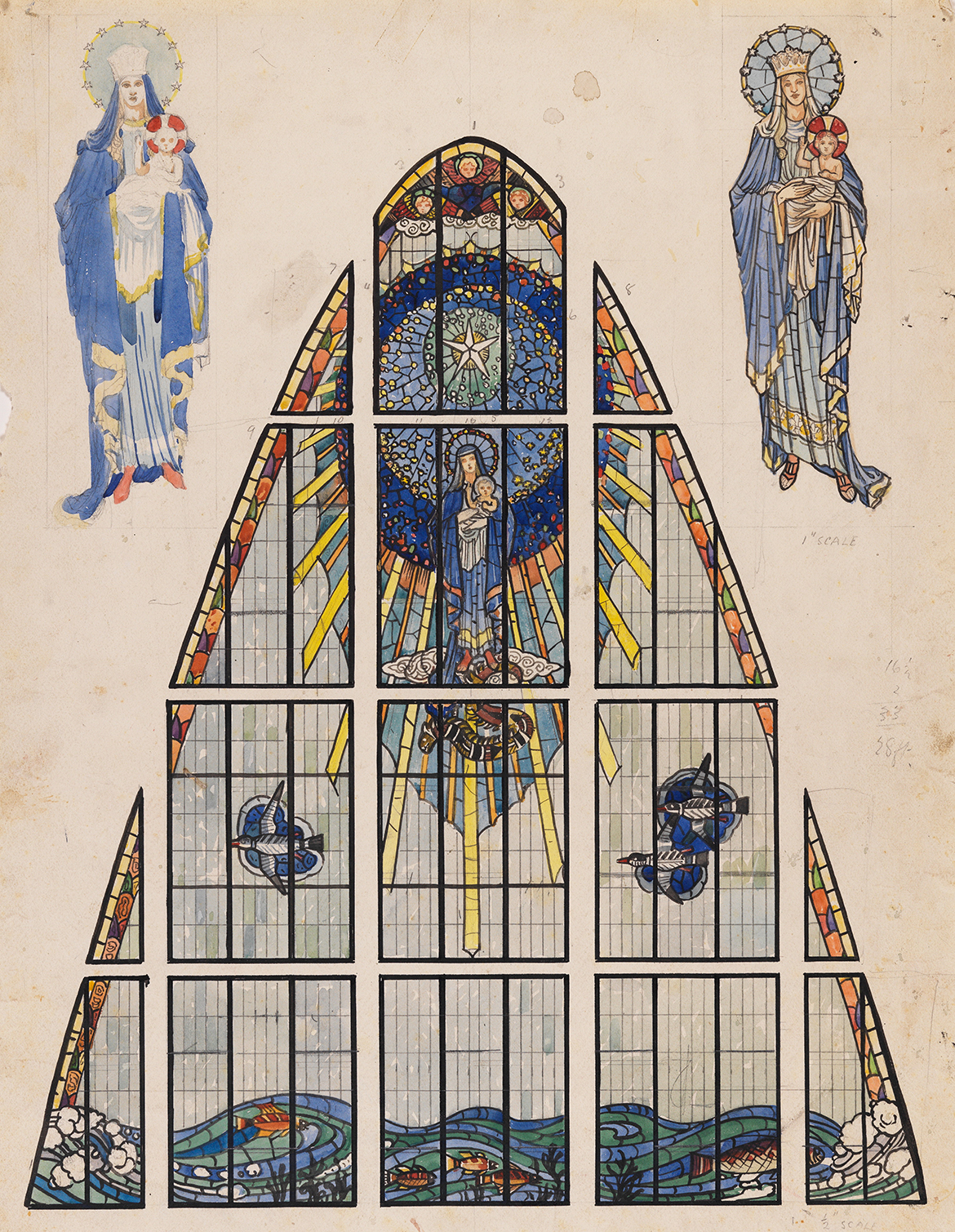
William Bustard Archive
William Bustard is represented in the QAGOMA Collection and the Research Library holds the William Bustard Archive of original material, including his exhibitions book, 1931–50, pressclippings, photographs of his stained glass windows and letters. A selection of material from the archive is currently on display in the Library.
QAGOMA Research Library
The QAGOMA Research Library is located on Level 3 of the Gallery of Modern Art (GOMA). Open to the public Tuesday to Friday 10.00am to 5.00pm. visit us in person or explore the online catalogue. Access to special collections is available by appointment.
#QAGOMA
